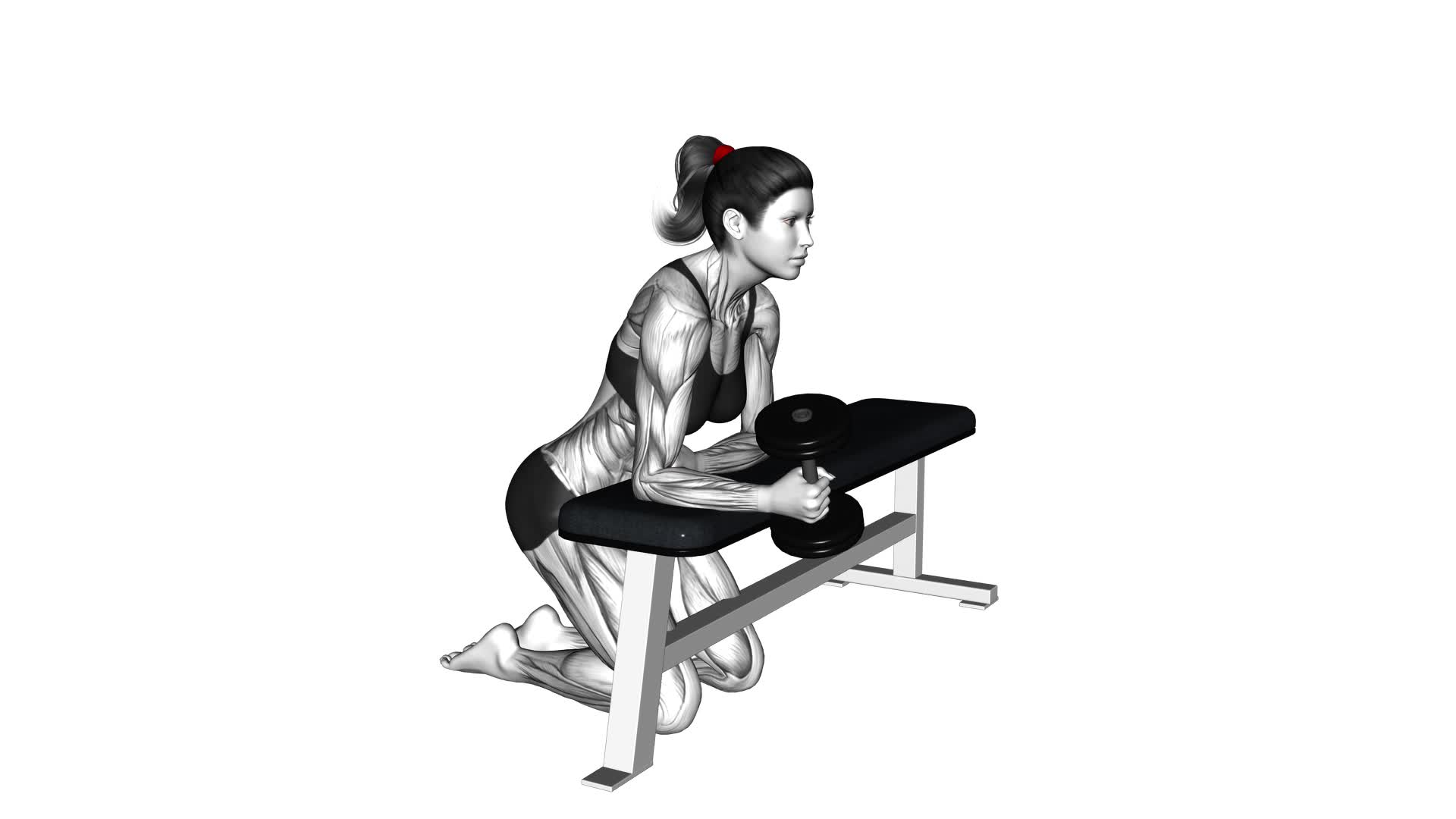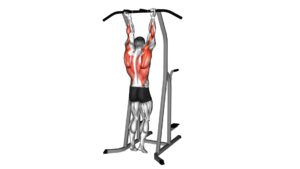Dumbbell Over the Bench Supination – Video Exercise Guide & Tips

Are you looking for an effective exercise to target your biceps and forearms? Look no further than the dumbbell over the bench supination!
Watch This Exercise Video
This exercise is a great way to build strength and definition in your upper body. In this article, we will guide you through the proper form and technique, provide variations and modifications, and offer tips to maximize your workout.
Get ready to take your arm training to the next level with this challenging exercise.
Key Takeaways
- Targets and strengthens upper body muscles
- Improves grip strength
- Helps prevent injuries related to weak upper body muscles
- Enhances overall athletic performance
Benefits of Dumbbell Over the Bench Supination
To fully understand the benefits of dumbbell over the bench supination, you should consider how this exercise targets and strengthens your upper body muscles. The dumbbell over the bench supination primarily activates the muscles in your arms, shoulders, and upper back. As you perform the exercise, your biceps and brachialis muscles in your arms are heavily engaged, helping to increase the strength and size of these muscles. Additionally, your deltoids, particularly the anterior and lateral heads, are recruited to stabilize and control the movement of your arms.
Incorporating dumbbell over the bench supination into your upper body workout routine is fairly simple. Start by selecting an appropriate weight dumbbell that challenges you but allows for proper form. Lie face down on a bench with your arms hanging down, palms facing forward. Slowly lift the dumbbells towards your shoulders by rotating your palms upward. Pause for a moment at the top and then slowly lower the dumbbells back to the starting position. Aim for 3 sets of 10-12 repetitions, ensuring that you maintain proper form throughout the exercise.
Proper Form and Technique for Dumbbell Over the Bench Supination
To perform the dumbbell over the bench supination with proper form and technique, you should start by using an appropriate weight dumbbell that challenges you but allows for proper execution. This exercise primarily targets the supinator muscles, which are located in the forearm and responsible for supinating the forearm and hand. Supination benefits include strengthening the wrists, improving grip strength, and enhancing overall upper body stability.
To begin, sit on a flat bench with your feet planted firmly on the ground. Hold a dumbbell in one hand with an underhand grip, palm facing upward. Place your forearm on the bench, ensuring that your wrist hangs off the edge. Your elbow should be slightly bent and close to your side. Slowly rotate your forearm and hand upward, while keeping your upper arm stationary. Pause briefly at the top of the movement, and then slowly lower the dumbbell back down to the starting position. Repeat for the desired number of repetitions, and then switch arms.
Proper form and technique are crucial for maximizing the effectiveness of this exercise and preventing injury. Maintaining a stable upper arm and focusing on the supination movement will ensure that the targeted muscles are properly engaged.
Now, let's explore variations and modifications for dumbbell over the bench supination.
Variations and Modifications for Dumbbell Over the Bench Supination
Now let's explore some variations and modifications you can incorporate into your dumbbell over the bench supination routine to add variety and challenge to your workout.
One variation you can try is using different grip positions. Instead of using a neutral grip, you can use an underhand supinated grip or an overhand pronated grip. This will target different muscles in your forearms and provide a different stimulus to your workout.
Another modification you can make is adjusting the weight of the dumbbells. You can increase the weight to add more resistance and intensity to the exercise. Conversely, you can decrease the weight if you're just starting out or want to focus on perfecting your form.
You can also try performing the exercise on an incline or decline bench. This will change the angle and target different areas of your forearms and biceps.
Additionally, you can incorporate a pause at the top of the movement or perform slow eccentric contractions to further challenge your muscles.
By incorporating these variations and modifications into your dumbbell over the bench supination routine, you can keep your workouts interesting and continue to make progress.
Now, let's move on to the next section to learn about common mistakes to avoid with dumbbell over the bench supination.
Common Mistakes to Avoid With Dumbbell Over the Bench Supination
When performing the dumbbell over the bench supination exercise, it's important to avoid common mistakes that can hinder your progress and potentially lead to injury.
Here are some common mistakes to avoid:
- Using too much weight: It can be tempting to go heavy, but using weights that are too heavy can compromise your form and increase the risk of injury. Start with lighter weights and gradually increase as your strength improves.
- Rounding your back: Maintaining proper form is crucial during this exercise. Avoid rounding your back as it can strain your lower back and lead to injury. Keep your back straight and engage your core for stability.
- Jerking the weights: Smooth and controlled movements are key to getting the most out of this exercise. Avoid jerking the weights or using momentum to lift them. Focus on using your biceps and forearms to perform the movement.
- Neglecting alternative exercises: While the dumbbell over the bench supination exercise is effective, it's important to incorporate variety into your workout routine. This helps prevent overuse injuries and keeps your muscles challenged. Consider incorporating exercises like hammer curls or reverse curls to target different muscle groups.
Tips for Maximizing Your Dumbbell Over the Bench Supination Workout
To maximize your dumbbell over the bench supination workout, focus on maintaining proper form and using controlled movements throughout the exercise. This will help you engage the targeted muscles effectively and reduce the risk of injury. When performing this exercise, it's important to keep your core engaged and your back straight. Avoid arching your back or using momentum to lift the dumbbell.
To further maximize your workout, you can make common modifications to increase the intensity. For instance, you can use a heavier dumbbell or increase the number of repetitions. Another modification you can try is performing the exercise on an incline bench to target your muscles from a different angle.
Proper muscle activation is key to getting the most out of this exercise. To activate your muscles effectively, focus on squeezing your biceps and forearms as you lift the dumbbell. This will help you engage the muscles throughout the entire range of motion and get a better contraction.
Remember to always start with a weight that's appropriate for your fitness level and gradually increase the weight as you become stronger. By maintaining proper form, making modifications when needed, and focusing on muscle activation, you can maximize the benefits of your dumbbell over the bench supination workout.
Frequently Asked Questions
How Many Sets and Reps Should I Do for the Dumbbell Over the Bench Supination Exercise?
For the dumbbell over the bench supination exercise, you might be wondering how many sets and reps to do. Well, it depends on your fitness goals and current strength level.
Generally, it's recommended to start with 3 sets of 8-12 reps. This allows for enough volume to stimulate muscle growth and strength gains.
As you get stronger, you can increase the number of sets or reps or even try different variations to continue challenging your muscles and reap the benefits.
Can I Do the Dumbbell Over the Bench Supination Exercise With a Barbell Instead of Dumbbells?
Yes, you can do the dumbbell over the bench supination exercise with a barbell instead of dumbbells. However, it's important to note that using dumbbells allows for a greater range of motion and isolation of the forearm muscles.
The dumbbell over the bench supination exercise specifically targets the supinator muscles, which play a crucial role in forearm and grip strength.
Is the Dumbbell Over the Bench Supination Exercise Suitable for Beginners?
The dumbbell over the bench supination exercise is suitable for beginners because it offers several benefits for muscle growth. By supinating your wrists, you engage the muscles in your arms, particularly your biceps and forearms.
This exercise also helps improve grip strength and overall upper body stability. However, there are common mistakes to avoid, such as using too much weight or swinging your body.
Focus on proper form and start with lighter weights to build strength gradually.
Can I Do the Dumbbell Over the Bench Supination Exercise if I Have a Shoulder Injury?
Should I avoid the dumbbell over the bench supination exercise if I've a shoulder injury?
If you have a shoulder injury, it's important to take precautions and modify the exercise accordingly.
Consult with a medical professional or a qualified trainer to determine the best course of action. They can provide guidance on how to modify the exercise to ensure it doesn't aggravate your shoulder injury.
Remember to prioritize your safety and listen to your body's cues during the workout.
Are There Any Alternatives to the Dumbbell Over the Bench Supination Exercise That Target the Same Muscles?
Looking for alternatives to target the same muscles as the dumbbell over the bench supination exercise?
There are a few options you can try. One alternative is using resistance bands to perform the supination movement.
Another option is to use a cable machine with a handle attachment to do supination exercises.
Both of these alternatives will engage the same muscles as the dumbbell over the bench supination exercise.
Conclusion
In conclusion, the dumbbell over the bench supination is a highly effective exercise that targets the muscles in your arms, particularly the biceps and forearms.
By following the proper form and technique, you can maximize the benefits of this exercise and avoid common mistakes.
Additionally, there are variations and modifications available to suit your fitness level and goals.
Incorporate this exercise into your workout routine to strengthen and tone your upper body.

Author
Years ago, the spark of my life’s passion ignited in my mind the moment I stepped into the local gym for the first time. The inaugural bead of perspiration, the initial endeavor, the very first surge of endorphins, and a sense of pride that washed over me post-workout marked the beginning of my deep-seated interest in strength sports, fitness, and sports nutrition. This very curiosity blossomed rapidly into a profound fascination, propelling me to earn a Master’s degree in Physical Education from the Academy of Physical Education in Krakow, followed by a Sports Manager diploma from the Jagiellonian University. My journey of growth led me to gain more specialized qualifications, such as being a certified personal trainer with a focus on sports dietetics, a lifeguard, and an instructor for wellness and corrective gymnastics. Theoretical knowledge paired seamlessly with practical experience, reinforcing my belief that the transformation of individuals under my guidance was also a reflection of my personal growth. This belief holds true even today. Each day, I strive to push the boundaries and explore new realms. These realms gently elevate me to greater heights. The unique combination of passion for my field and the continuous quest for growth fuels my drive to break new ground.



